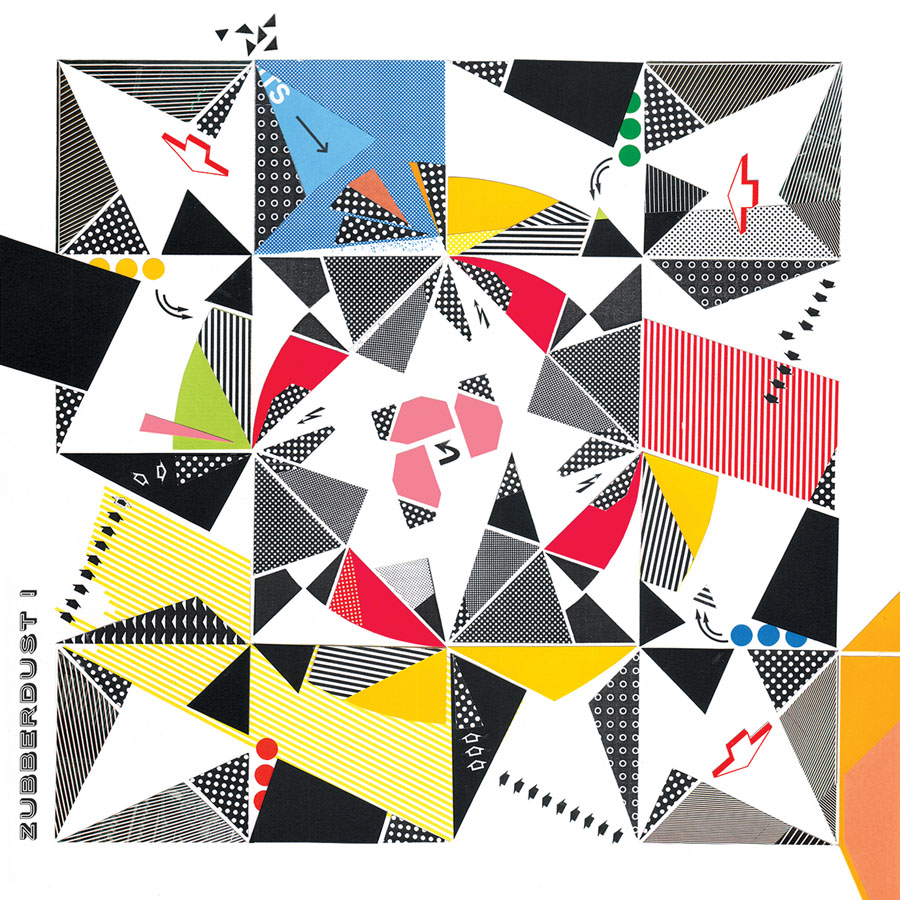[intense_video video_type=”vimeo” video_url=”http://www.vimeo.com/104547245″]
BOOM! And we’re in it. One second in, and the album is already rocking at full throttle, cranking out the metal riffs typically reserved for the end of longer tracks. And it just keeps getting better from there. Already, the LP has earned its exclamation point. Zubberdust! shouts the cover. (Rough translation: of the highest quality.) Marie-Douce St.-Jacques’ bright geometrical explosion provides the same impression. The cover art looks like a collection of board games, cut up and repositioned, intimating that the same thing has been done with the music; it has. This is lively, spiky jamming, perfect for rooftop parties and desert caravans. One would expect no less from Constellation Records (Godspeed You! Black Emperor, Do Make Say Think, Esmerine). The label has done it again: Zubberdust! is the first great album of fall.
So where did this band come from? Credit Jean-Sebastien Truchy of Fly Pam Am for organizing the quartet. Fly Pan Am was one of Constellation’s first bands – we’re talking last century – but hasn’t released new material for a decade. If a band falls in the forest and no one is around to hear it, does it make a sound? This one does. Fly Pan Am guitarist Eric Gingras was also recruited for the project, along with guitarist Sebastien Fournier and drummer Nasir Hasan. Electronics and vocalists were added, and the amalgamation was complete.
While the vocals are never dominant, they end up being crucial to the equation. The album is divided into two long tracks, with two short codas. On “Face à l’instant”, the vocal refrain is a choral chant whose notes are slightly reminiscent of the Florida State Seminoles/Atlanta Braves fan cheer. This exuberant refrain is a pure expression of joie de vivre; anyone can sing it, many will, and more will find it sticks in the head like a pleasant memory. This refrain re-appears in modified form on “Super Pastiche Fantastique”, alternating with Truchy’s wordless vocals, which sound like a happily deranged David Byrne engaging in onomatopoeia. When the handclaps enter in Part 2, they seem like a natural outgrowth of the material. A softer, more recessed style of singing is present at the close of “Déja hier…”, following a train announcement and accompanied by crickets, as if the singer has fled the party and is now singing in a field, while the band wonders where he has gone.
As for the music, Avec le soleil sortant de sa bouche (With the sun coming out of his mouth) offers an alternating series of catchy riffs and trance-like repetitions that build and burst in equal measure. The electronics add texture and drama, especially on the second side, which culminates in static waves crashing against jetties of cymbals. In concert, one can imagine these tracks being stretched from 20 minutes to 40; such is their power to distort time. (And how often does one say that a 20-minute piece should be longer?) The final coda presents the sound of a dinner party (“À partir de dorénavant / From now on”). As the conversation fades, the music does as well, touching down smoothly like a Pan Am jet.
✪
![[Futuristika!]](https://futuristika.org/wp-content/uploads/2020/12/futuristika-logo.png)

